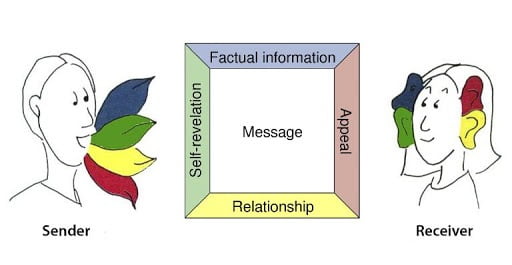
You can Read More into SIP Trunk solutions, invest in Slack, and have weekly meetings to try and improve communication within your business. However, this won't be worth it if you don't understand the basics of communication and how it works. Many books about corporate communication mention the so-called 'square of communication'. As a communication specialist the following factors interested me the most:
1-Right place–choose the right location that suit both you and your counterpart to optimize the outcomes.
2-Right time–select the timing that suit your and counterpart preferences.
3-Right agenda – prepare well your agenda to set the expectations and achieve best results.
4-Right way – be mindful of the style you use to tackle the communications.
By Emile Fakhoury
I will further detail these aspects considering my personal corporate experiences and from various sources of information that I have collected and reviewed over the years. Following these rules will eliminate 'waste' in your time usage and contributes to success of a project.
Communication has been always seen as an essential element for projects success, it connect the project teams and the stakeholders to achieve the project outcomes. Being able to navigate easily in your communication plan will definitely play a great role into success.
As mentioned in my previous blog, establishing good communication flow and practising these techniques means navigating your stakeholders towards the project objectives and managing risks efficiently.
The 4 factors stated above need to be well considered and mapped into your communication plan and into the day to day business as usual work. The centre of decision making on these factors should be your customer who is at the centre of the project and receiving the outcomes of the project and in alignment with your organisation mission statement.
- Starting from choosing the venue for the meeting that need to have all elements that make your attendees feel comfortable, or choose a virtual meeting tool that is friendly use and suit the attendees as equivalent to the physical place in the virtual world.
Remember that meetings are considered consensus-building meaning that creative-problem solving should occur before the meeting in a small focused group. When in meeting, you need to be fully present with no distractions.
- The right time for the meeting is essential to getting the best outcomes, discuss with your stakeholders their preferences and make sure the timing is agreed before calling for the meeting. You may not be able to satisfy everyone's schedule, rather you reduce the number of attendees to a focused group to achieve the desired outcome and later widen the group of attendees.
Choosing the right time help ensure the focus is provided to the meeting or conversation without any distraction.
- The agenda need to be drafted before the meeting to get the team prepared and collect feedback so you can finalise the agenda to review the ideas to be discussed in the specified time frame.
This will help remove surprises or confusion during the meeting as much as possible and also direct the attention to the agenda items and towards action resolution exercise.
In recurring meeting, an action tracker need to be kept alive to present the actions progress over time and help you keep record of all decisions agreed.
In some case, you can share bullet points or even share slides in advance of your meeting to get the engagement optimised and capture the requirements and your stakeholders inputs that will keep them attentive to see their points being taken and addressed during the meeting.
- After finalising the time, location or virtual meeting and agenda, it is not secret that the way you deliver the message is crucial to the meeting success. Know your stakeholders and project team help you tune your way or style to deliver the message the right way. There is no wrong or right way, there is the most suitable way that change depending on the stakeholders and culture and environment that could always change during the life cycle of the project.
You need to adopt a dynamic approach and continuously assess your stakeholders and project team to know and understand what motivate them to keep the team engaged so you can deliver the project to its best outcome.
Emile Fakhoury is a Project Manager Professional working in oil and gas and power generation industries.

Interesting article well written
Thank you Mireille
Very simple and essential for any PM to follow every single day.Thank you Emile for sharing.
Thank you Hameeda!
Thank you Hameeda
Well expressed !
Thank you Joelle !
Well articulated still each aspect is spelled out.
Thank you Dinesh
Great article, communication is a crucial skill for success in career and personal life
Thank you George !